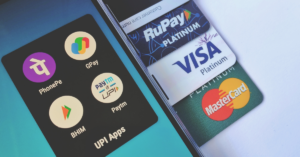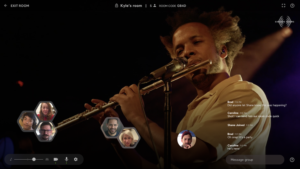Investing in SEO and PPC for the first time can be overwhelming. To boost your website’s performance in both organic and paid search, focus on essentials.
Here are a few insights to help you.
SEO As a Growth Strategy
To get the most out of SEO, you need to have a clear strategy. Ensure that Google can crawl your site, index it, and understand your context.
With more than 200 Google’s ranking factors, you should understand various aspects of SEO, such as technical SEO, on-page SEO, off-page SEO, and content marketing.
The advantages of SEO are multiple.
- Boosting website visibility and putting you in front of the right customers.
- Organic clicks are free. Sure, SEO requires investment in time, resources, and effort.
- SEO provides more stability than PPC. When your SEO is done right, your rankings will remain constant.
- SEO is more affordable than PPC in the long-run.
- Google’s organic results attract more than ten times the number of clicks than paid results.
The main disadvantage of SEO is that it takes time. To rank in the top spots for high-volume and competitive keywords, you will need to wait months.
PPC As a Growth Strategy
PPC relates to paid ads you run through Google Ads. Other options include display ads, remarketing, Gmail ads, YouTube ads, etc.
When planned strategically, PPC provides you with many benefits, including:
- It delivers instant results. Once your campaign is live, you will start driving clicks, traffic, and conversions.
- PPC optimizes website exposure. PPC ads are placed at the top of the SERPs.
- Paid ads boost brand presence. You can use ads to display your phone numbers, callouts, or sitelinks.
- PPC comes with exceptional targeting options. That means you can segment your audiences and serve highly personalized and relevant ads to them.
- Running and managing a successful PPC campaign involves hiring an experienced AdWords agency and perhaps a copywriter. On the contrary, SEO requires hiring a large team of content writers, link builders, technical SEO professionals, UX designers, etc.
The major disadvantage of paid ads is that they work on a pay-per-click principle. That means you need to pay every time someone clicks on your ad.
Also, once you stop investing in an ad, your traffic stops. On the other hand, your SEO efforts last forever.
Using SEO and PPC in the First Year: A Roadmap
Now that you know the benefits of SEO and PPC, you need to determine which approach is better for you. Of course, you can always combine the two. While PPC will help you see immediate results, SEO is an investment in the long run.
Here are a few practical tips on how to implement SEO and PPC when just starting out.
The 1st Quarter: Setting the Foundation for SEO and PPC
Claim a Google My Business listing. Optimize it appropriately. Include relevant business data, such as its name, phone number, address, website, social handles, photos, etc. Also, add relevant keywords so your GMB listing can start showing up for related searches.
For starters, produce blog articles. Over time, you can diversify your content by creating infographics, case studies, e-books, etc.
However, you cannot expect your website to rank high in the SERPs immediately. That is why you need to invest in PPC.
By running multiple ads at the same time, you have a greater chance to attract audiences. Use Google Analytics to understand which keywords your customers engage with the most. Next, bid on successful phrases and remove the ads that are not getting traction.
In other words, serve ads to people who have already visited your website. If someone clicks on your ad, adds a product to a cart, and then abandon it, you can create relevant ads to encourage them to return to your website.
The 2nd Quarter: Diversify your Online Presence
In the second quarter, focus on deepening your SEO and PPC campaigns.
- Add more citations and register on industry-specific business directories.
- Earning backlinks from reputable websites in the same industry can also be a good starting point. For example, you can write relevant articles and contribute to non-competing websites.
- Diversify your PPC efforts. Apart from Google Ads, you can also take advantage of social media advertising. Based on a wide range of factors, you can create highly targeted social media ads. That helps you boost clicks, user engagement, and conversions.
The 3rd Quarter: Refine your Strategies
In the third quarter, start attracting global audiences with SEO. Talk to your in-house SEO team or agency about targeting global keywords.
At this stage, you should rely on analytics when targeting keywords. Understand which keywords drive the most visitors and keep optimizing your website content for them.
On the PPC front, keep diversifying your investments. For example, start running display ads. They are made up of textual content, images, or video ads that grab users’ attention and entice them to click.
Also, consider investing in Google’s Local Ads to target local audiences. They help you maximize store visits and calls from local customers.
The Fourth Quarter: Analyze and Optimize
The fourth quarter is all about data analytics, optimization, and expansion.
- Analyze your PPC campaigns and identify the ads that are bringing in the most clicks. Logically, enhance the budgets for those ads and reduce investment in underperforming ads.
- A/B test your landing pages to identify which ad copies, visuals, titles, and text convert the best.
- Expand to additional advertising channels, such as LinkedIn or Quota.
- Focus on content marketing. Identify your top-performing pages and refresh them. Replace broken links, outdated statistics, and poor-quality visuals. Keep your best content fresh and relevant.
- Start earning quality backlinks. For starters, you can contribute to relevant industry sites with quality articles. Some other link building options are link reclamation, broken link building, and content repurposing.
Conclusions
To get the most out of SEO and PPC in the first year, you should combine them. I hope this article will serve as your strong starting point!









